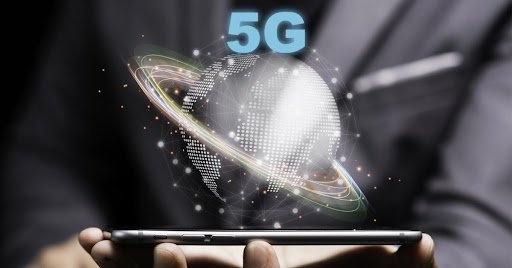Since the immense strength of 5G connectivity, healthcare providers may now give urgent care on demand. The 4G network and other communication technologies are currently widely use in the healthcare business for smart healthcare applications. However, as the market for smart healthcare grows, a solid network connection will become increasingly crucial.
Smart healthcare applications are likely to support the emerging 5G network. Most needs, such as ultra-reliability and low latency communications or vital machine type communication, high bandwidth, high density, and high energy efficiency, it can meet by many link devices, machines, and sensor-base applications inside the IoT ecosystem.
5G connectivity is quicker than 4G connectivity; it also provides huge connection power, allowing millions of devices to be connected simultaneously to construct 5G-enabled smart healthcare solutions.
Furthermore, the 5G networks and IoT combination is predict to alter future healthcare. It will provide the infrastructure required to transport large amounts of data in situations where access to near-real-time data and the capacity to make split-second choices are important. 5G technologies such as device-to-device (D2D) communication mm waves, the macro cell, and tiny cells can handle the ultra-densification and high energy consumption concerns of wireless sensor networks-based IoT applications. Small cells are low-powered radio access nodes that range in size from a few meters to a mile and can be utilized for smart healthcare solutions such as remote surgery that require high data rates. Small cells are classified into three varieties based on their size: femtocells, picocells, and micro-cells. Femtocells boost coverage and capacity in a limited area, such as a hospital or residence. It has a range of 0.1 km and can support up to 30 users.
5G will significantly impact healthcare and other industries like manufacturing, automotive, smart grid, consumer electronics, and so on.
In healthcare, there are various promising 5G IoT application cases. Some of them are listed below:
Virtual Consultations Using HD Video
Enhanced mobile broadband (EMBB) enables quicker data rates across broader coverage regions, enhancing ultra-HD video consultation. It enables basic and secondary care providers to provide higher-quality services such as initial screening exams. Routine check-ups, therapy/rehabilitation sessions, and, increasingly, visual diagnosis. The ability to conduct these appointments over the internet minimizes the stress. On the patient to travel to see healthcare specialists while lowering the expense of each appointment.
Remote Patient Monitoring
5G improves reliability, performance, and capacity for proactive healthcare services and chronic disease management. The 5G network provides secure and quicker data transfer to the cloud when sensors, wearables, and e-health devices are linked as part of an IoT solution. AI-enabled software in the cloud monitors and analyses patient vitals without requiring patients to visit primary care centers.
Data Analysis in Real Time
The most significant advantage of 5G is real-time data transport for improved data processing. It can provide ultra-low latency, allowing data to process more quickly at the network’s edge. This will benefit various applications, including remote diagnostics, remote surgery, real-time patient health monitoring, and increased patient involvement. It improves data analytics capabilities by connecting smartphones, mobile apps, cloud services, devices, sensors, and systems.
Video Analytics for Behavioural Recognition
Video analytics can assist in identifying patients’ strange behavior, such as falling or becoming a danger to oneself. 5G enables high bandwidth. allowing HD video to transfer for processing and analytics on the edge or cloud utilizing data collected from smart cameras.
From Vision to Reality
Unlike 4G, 5G communication technology, in conjunction with IoT, Big Data Analytics, Artificial Intelligence (AI), and Machine Learning (ML), will significantly impact the healthcare system. However, more is require to make 5G operate. Chipsets, security, network-connected devices, and resources all necessitate the knowledge of 5G engineering services and the development of connection platforms.
Bottom Line
As we have seen many more applications of this technology, the potential of 5G IoT in healthcare is enormous. It has the potential to improve medical quality, lower costs, and provide a better patient experience, among other benefits. As the use of 5G IoT in healthcare grows, we will see the development of a connected healthcare ecosystem that will alter how we receive care. Finally, this paved the road for better healthcare for all.
OEMs should cooperate with a reliable technology partner for 5G IoT solution development to realize the full potential of 5G and boost technological capabilities for future goods.


